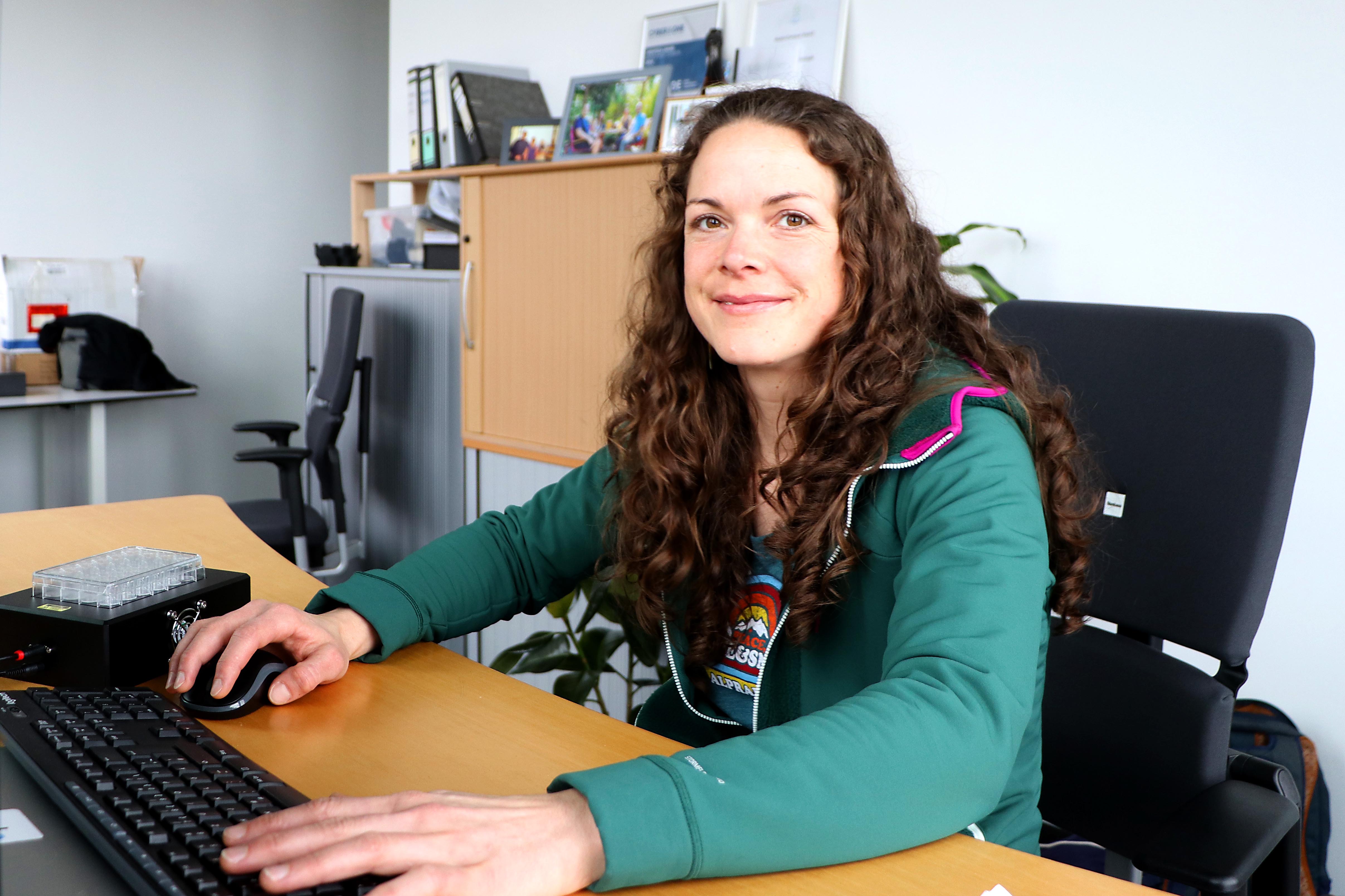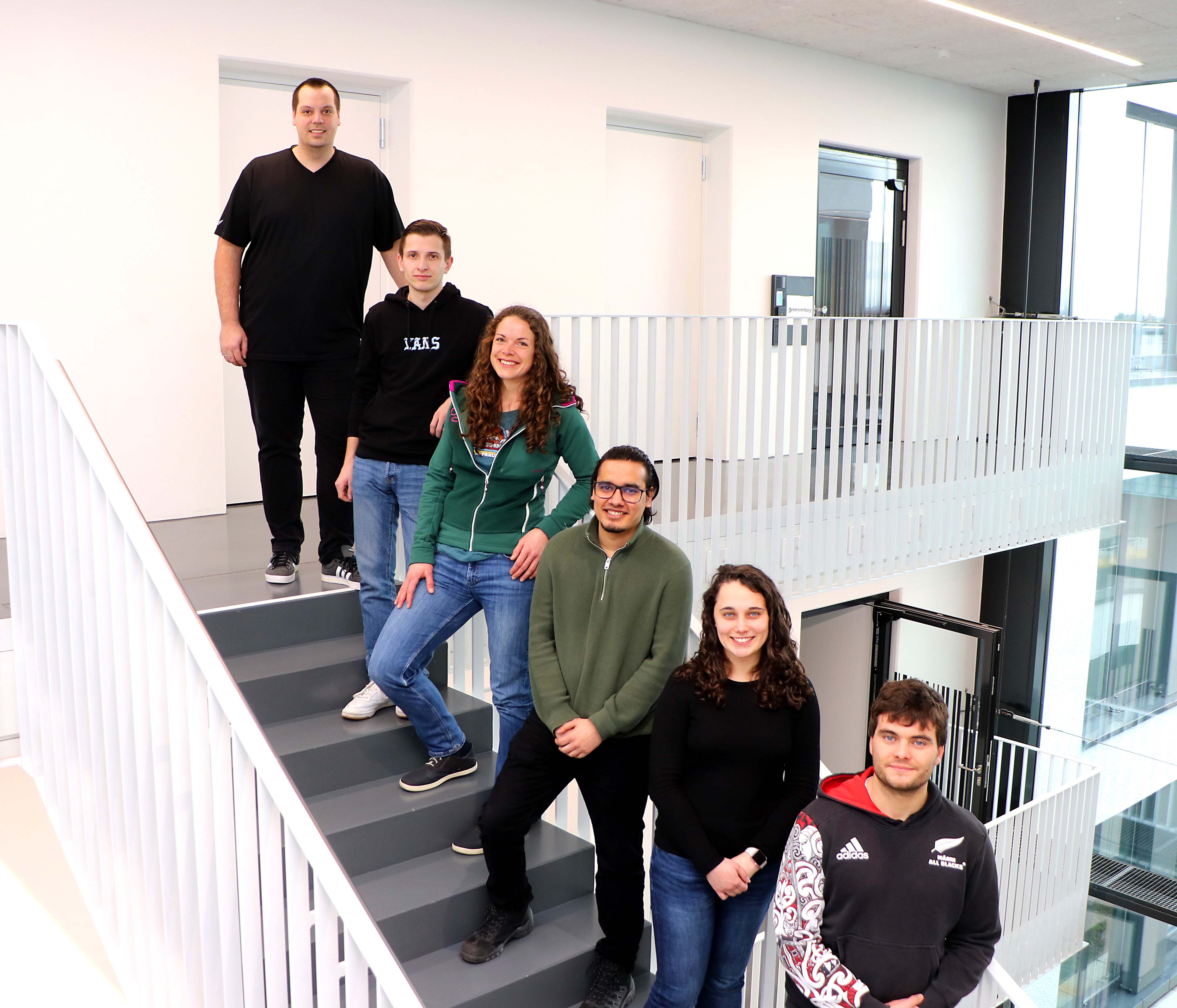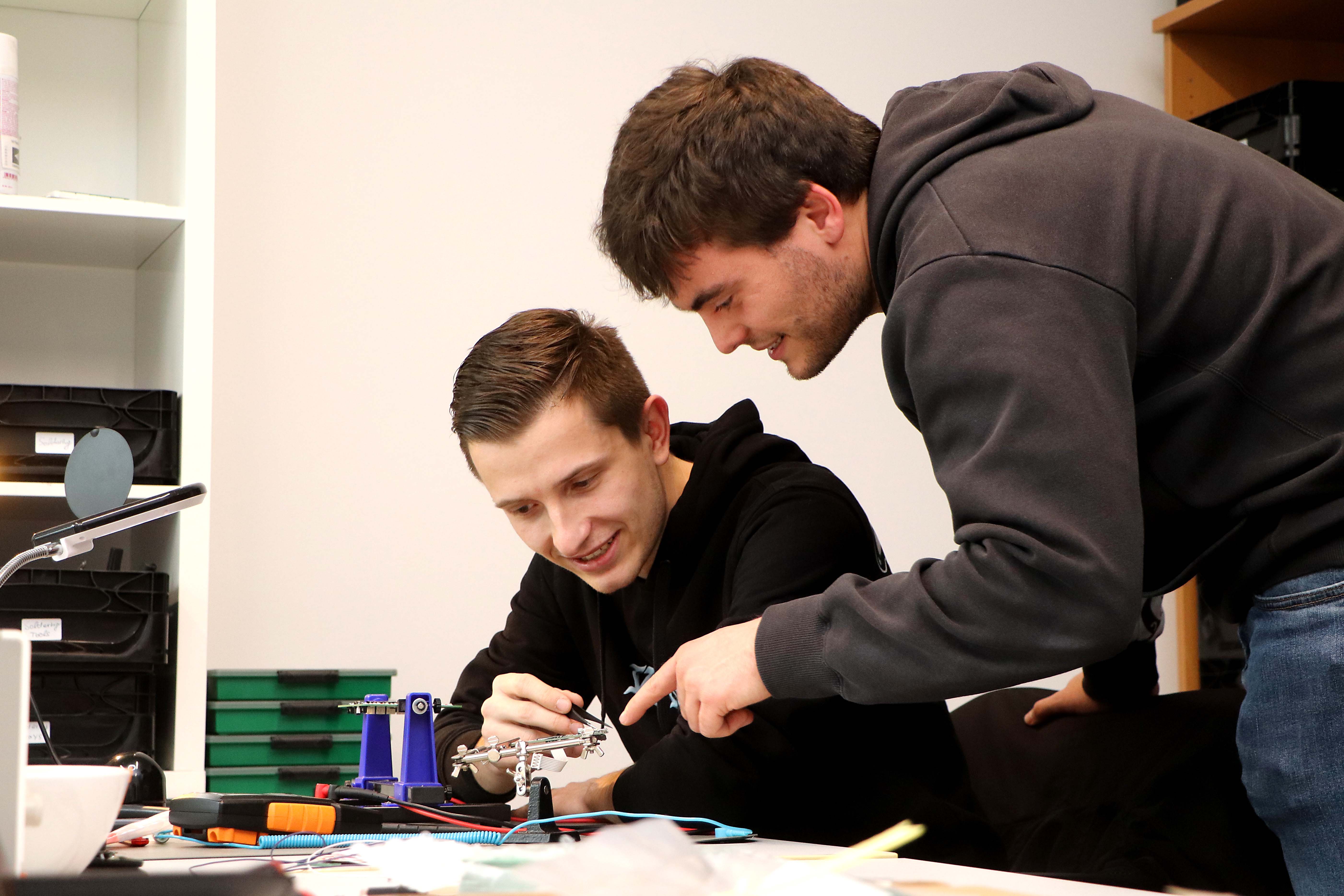Optogenetic cell analysis
opto biolabs: how frustration and inventiveness led to the establishment of a company
When she found she had no suitable illumination devices for her doctoral thesis, Dr. Kathrin Brenker simply created her own customised adapters and founded a company called opto biolabs. Now, Brenker and company co-founder Luis Köbele sell two different types of devices, with a third device on its way to market maturity. The main goal of the two opto biolabs founders is to equip laboratories with illumination technologies that allow a number of optogenetics methods to be used to accelerate development of optogenetic therapeutics.
Dr. Kathrin Brenker’s initial ambition was to study molecular medicine and become a university professor. She followed a molecular life science course in Lübeck, and perservered with her studies until she was able to enrol in molecular medicine, an elective subject taught at the University of Göttingen. In pursuit of her academic goals, Brenker completed her master’s thesis and began a doctoral thesis in Vancouver, Canada in 2009. However, dissatisfied with the approach to science, she decided not to complete her doctorate in Vancouver, returning to Freiburg in Germany in 2012, where she hoped to find more suitable conditions and embarked on another doctoral thesis.
Optogenetic B-cell activation under the microscope
 Dr. Kathrin Brenker took a chance and founded the company opto biolabs due to a lack of suitable illumination equipment in optogenetic research. © Stefan Heyl, Freiburg
Dr. Kathrin Brenker took a chance and founded the company opto biolabs due to a lack of suitable illumination equipment in optogenetic research. © Stefan Heyl, FreiburgHere, too, the doctorate was ill-fated. The research conditions in Freiberg were suboptimal: she found herself working on optogenetics in a research group where she was the only one focusing on this area. Consequently, she had to acquire knowledge independently, as there was no established method for analysing cellular systems at the time. Her research focused on investigating the influence of the SYK (spleen tyrosine kinase) enzyme on B-cell regulation. To carry out the optogenetic part of her work, Brenker generated light-activated SYK constructs. Inducing a conformational change in the kinase using light leads to the release of calcium in B cells, thus triggering their activation.
The research methods Brenker was obliged to use were both long-winded and challenging: stimulating cells under a fluorescence microscope and measuring the calcium they released was a laborious task. The risk of extraneous light and sample overheating forced her to work in the cold and dark. Despite investing a significant amount of time, Brenker was only able to analyse a few cells. It was easier and more accurate to measure calcium changes for each individual cell using a flow cytometer. Merging optogenetics and flow cytometry enabled her to characterise a larger number of cells more efficiently. She later recalls that this combination served as the basis for the first patent. The biggest problem, however, was the lack of good illumination equipment. Brenker conducted her initial experiments using tripods and torches, which she improvised and attached to the cytometer. “When I wanted to change the wavelength, I had to unscrew and replace torches,” Brenker recalls. This resulted in inhomogeneous illumination, making it difficult to reproduce results consistently. She was unable to submit a publication based on her work, and her supervisor refused to award her a doctoral degree. “During that period, the requirement for submitting a doctoral thesis typically included having a publication. This posed a significant hurdle for me due to the negative results obtained,” Brenker says about this unhappy period in her life.
Patent application out of despair
 The opto biolabs team: Luis Köbele (co-founder), Maxi Willaredt, Dr. Kathrin Brenker, Pranay Jain, Emilija Bostogaite, Philipp Helwig (from top to bottom). © Stefan Heyl, Freiburg
The opto biolabs team: Luis Köbele (co-founder), Maxi Willaredt, Dr. Kathrin Brenker, Pranay Jain, Emilija Bostogaite, Philipp Helwig (from top to bottom). © Stefan Heyl, FreiburgFaced with the limitations of her research equipment, Brenker built the first illumination devices using her own research funding. At a conference in 2015, someone suggested she should consider patenting her invention. “This advice, coupled with my dissatisfaction with my doctoral thesis sparked the idea that a patent could offer an alternative path to recognition,” she says. Back then, there was nothing suitable on the market for delivering light in a controlled way to a sample without overheating and killing the cells. She collaborated with the Biology III workshop at the University of Freiburg to develop the first prototype of what is now known as pxONE. This is a small cylindrical adapter, which, when attached around a sample tube on a flow cytometer, enables radial illumination of cells using LEDs within a water chamber, maintaining a constant temperature.
“The revolutionary aspect of the invention lies in the compact integration of illumination and temperature control within a small space,” explains Brenker. Software enables precise optogenetic induction of samples using defined wavelengths while the samples are simultaneously analysed in the cytometer. The results can be monitored in real-time on a screen. “The measurement takes approximately five minutes, and – with practice – the analysis takes around two minutes,” explains Brenker. Initially, she had reservations about filing the invention with the Central Office for Technology Transfer but staff there were amenable and helpful. Encouraged by advice from the University of Freiburg’s start-up office, the immunobiologist plucked up the courage to establish her own company.
"The encouragement and support I received motivated me enormously,” she says. “To be honest, I had no alternative strategy at that point, and the decision to found opto biolabs was the obvious choice.” In 2018, she was awarded an EXIST start-up grant of 140,000 euros, which effectively led to the establishment of the company and its subsequent transition to a limited liability company in 2020. On top of this, opto biolabs also received early-stage funding from Start-up BW Pre-Seed I, which enabled a second product to be launched on the market. Additional support then exceeded her initial expectations, as she secured investment from two business angels and was awarded three other grants (Junge Innovatoren, EU Attract and Pre-Seed II).
Learning by doing
Brenker’s journey to company foundation was full of unexpected twists and challenges. The role of company founder came about almost by accident and her initial team, comprised of private individuals, lasted only a year. The pandemic also posed significant obstacles. Convincing people of a company’s market viability usually requires personal contact, but the pandemic made such interactions difficult. However, co-founder Luis Köbele, in charge of the optogenetics hardware, shares Brenker’s passion and dedication. Currently, they are both heavily involved in various aspects of the business, and have many and varied challenges to overcome as they build their company and the team, optimising the process - who does what, and what recruitment is required for which positions? Brenker and Köbele are also struggling to set a final sales price. Company employees produce the devices directly in the company’s workshop, but the price also needs to take into account packaging, transport and customs fees.
Customised illumination equipment for every experiment
 Maxi Willaredt and Philipp Helwig discussing the new design of an optoWell board in the opto biolabs workshop. © Stefan Heyl, Freiburg
Maxi Willaredt and Philipp Helwig discussing the new design of an optoWell board in the opto biolabs workshop. © Stefan Heyl, FreiburgThe first pxONEs have already been sold for 6,000 euros each, and a second product, the optoWELL, is performing even better with over thirty devices sold. The optoWELL allows flexible illumination of 24-well plates with three adjustable wavelengths while minimising heating. Unlike the pxONE, which is mainly used by a small community of cytometry experts working in optogenetics, the optoWELL offers a broader range of applications and has also attracted cell biologists, chemists and neurologists.
A third product, optoSORT, is about to be launched on the market. This device is particularly interesting for clinical applications such as personalised therapy. Its ability to sort specific immune cells using a voltage field has significant implications for patient immune responses.
The prominent feature of all these devices is the software behind them; it allows exposure to be controlled, so users can manipulate the parameters individually or through pre-defined protocols. "This completely standardises the experimental setup, and researchers anywhere in the world can do identical experiments under the same conditions, ensuring data reproducibility across different research settings,” says Brenker. “In the future, we envision a hybrid strategy for the company; in addition to offering customised devices, we plan to introduce a few standard devices that can be pre-produced.” The idea is to become the leader of illumination devices in optogenetic research by tailoring entire labs to opto biolab’s solutions, constantly expanding the range of tools and offering adaptations for all equipment used. Having done it once, Brenker would not hesitate to start a company again, and she encourages aspiring company founders not to be discouraged by hierarchical structures in science or the pressure of visibility on social media. “I think those in charge of working groups should make every effort to ensure that junior researchers know that their individual contributions are recognised and valued,” she says. “And I would to like to see more transparency within the scientific community, dispelling the notion that we are superheroes, but just ordinary individuals who dare to pursue their goals and have been lucky.”